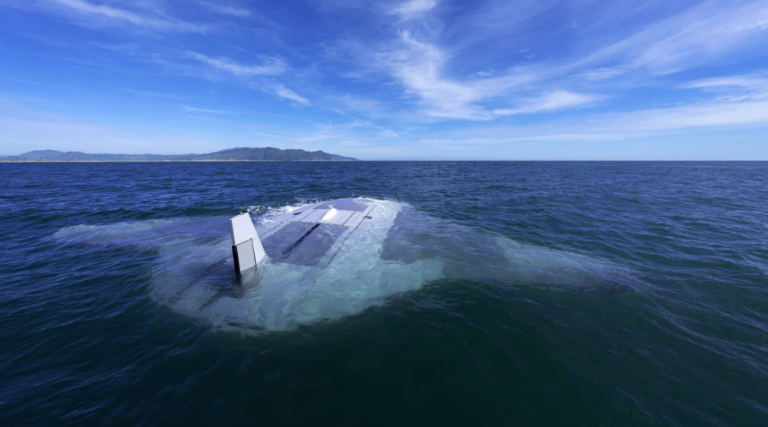
Ghost Shark and Manta Ray may sound like characters from a future Marvel film, but they actually represent potential advancements in Pacific naval defenses.
These names belong to prototype uncrewed underwater vehicles (UUVs or drones) recently unveiled by Australia and the United States, respectively. Experts believe these submersibles could signify the future of undersea warfare by demonstrating power while reducing human risk.
Drones have become a staple in aerial combat, extensively used by the US in Iraq and Afghanistan since the 1990s. More affordable drones are now crucial for both sides in the Ukraine conflict. Kyiv has also developed naval surface drones that have dealt significant damage to Russia’s Black Sea Fleet.
While aerial and surface sea drones rely on satellites and light or radio waves for control, these methods do not work underwater. A 2023 study in the Swiss journal Sensors highlights that underwater communications require more energy and still suffer data loss due to variables like water temperature, salinity, and depth.
Manufacturers of the new military UUVs have not disclosed how they will tackle communication issues. However, when Australia introduced Ghost Shark last month, it hailed them as “the most advanced undersea autonomous vehicles in the world.”
The Australian Defense Ministry stated that Ghost Shark would offer the Navy a stealthy, long-range, autonomous undersea warfare capability for persistent intelligence, surveillance, reconnaissance (ISR), and strike. The first production models are expected by the end of next year. Although specific details remain classified, officials praised the swift development from concept to testing within two years.
Shane Arnott, Anduril’s senior vice president for engineering, highlighted the project’s progress ahead of schedule and within budget, calling it unprecedented. Australia’s chief defense scientist, Tanya Monro, also lauded the rapid delivery of the first Ghost Shark prototype.
Emma Salisbury, a fellow at the British think tank Council on Geostrategy, compared Ghost Shark to the US-developed Orca extra-large UUV, suggesting they both aim for missions involving intelligence, surveillance, reconnaissance, and anti-submarine capabilities.
The US Navy described the Boeing-built Orca UUV as a “cutting-edge, autonomous, unmanned diesel-electric submarine with a modular payload section” for diverse missions. The Pentagon plans to acquire five more UUVs, though a timeline wasn’t provided. The Orca has been in development for over a decade, contrasting with Ghost Shark’s rapid progress.
Chris Brose, Anduril’s chief strategy officer, stated that the company and Australia are proving that these capabilities can be built faster, cheaper, and more intelligently. Anduril Australia mentioned that Ghost Shark, developed entirely domestically, would be available for export after joining the Australian fleet.
Meanwhile, in the US, Northrop Grumman’s Manta Ray UUV underwent tests off Southern California in February and March. DARPA, the Pentagon’s technology development branch, emphasized Manta Ray’s modularity, allowing it to switch payloads based on missions. The Manta Ray can be transported in five standard shipping containers, assembled in the field, and then deployed.
Kyle Woerner, head of the Manta Ray program at DARPA, noted that this modular transport method allows the UUV to conserve internal energy for its mission. Despite starting in 2020, the Manta Ray’s program hasn’t progressed as quickly as Ghost Shark’s, and DARPA hasn’t set a timeline for its deployment in the US fleet.
China, identified by the US military as its main competitor in the Pacific, is also advancing in UUV development. Though details are scarce, China has likely been working on similar UUVs for at least 15 years and may have a comparable version to the Orca in testing.
Submarine expert H I Sutton reports that China is believed to have at least six extra-large UUVs in development. Other countries pursuing UUV technology include Canada, France, India, Iran, Israel, North Korea, Norway, Russia, South Korea, Ukraine, and the United Kingdom.
Source: CNN






